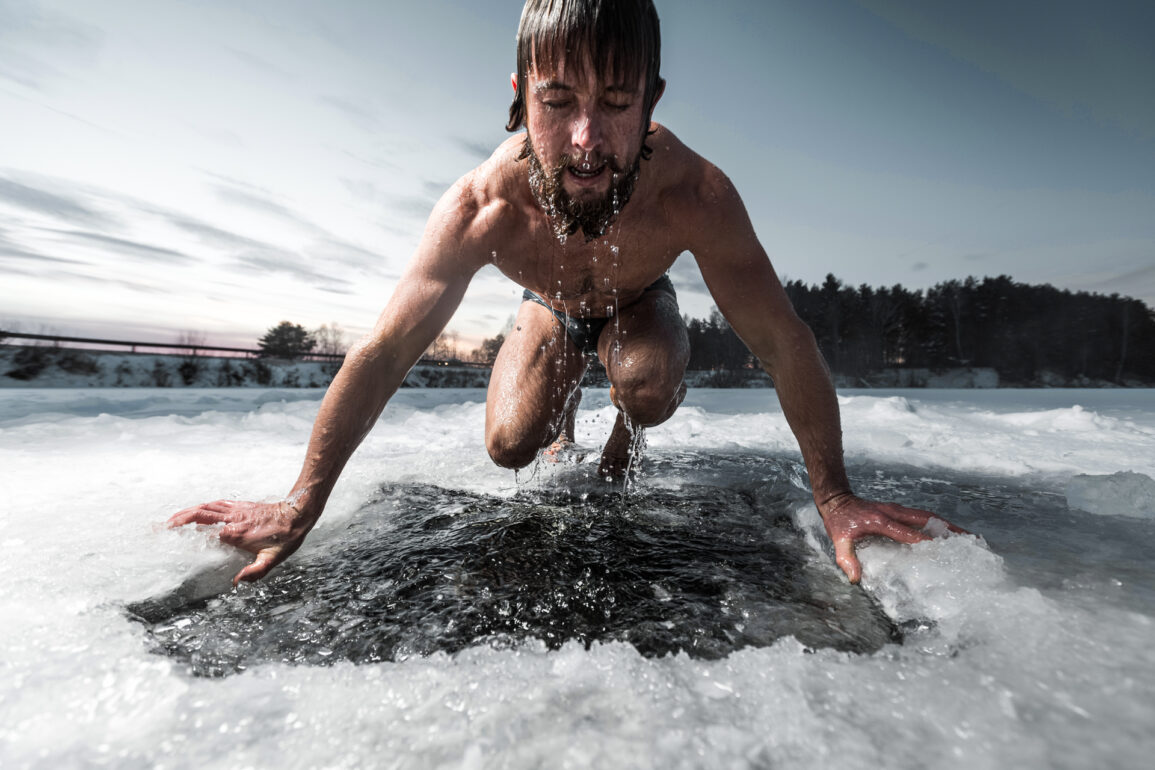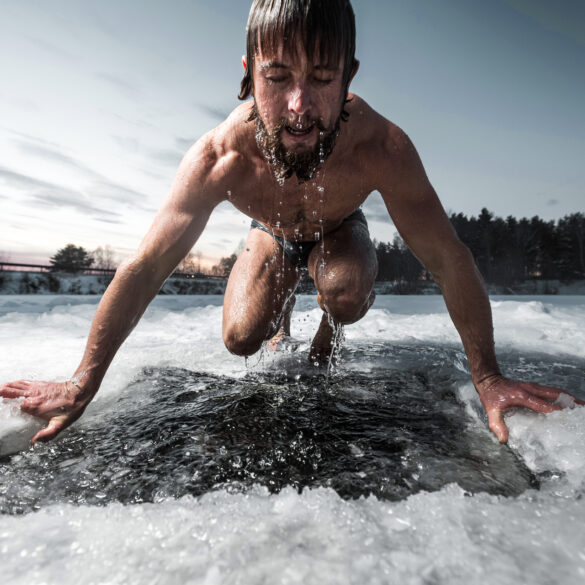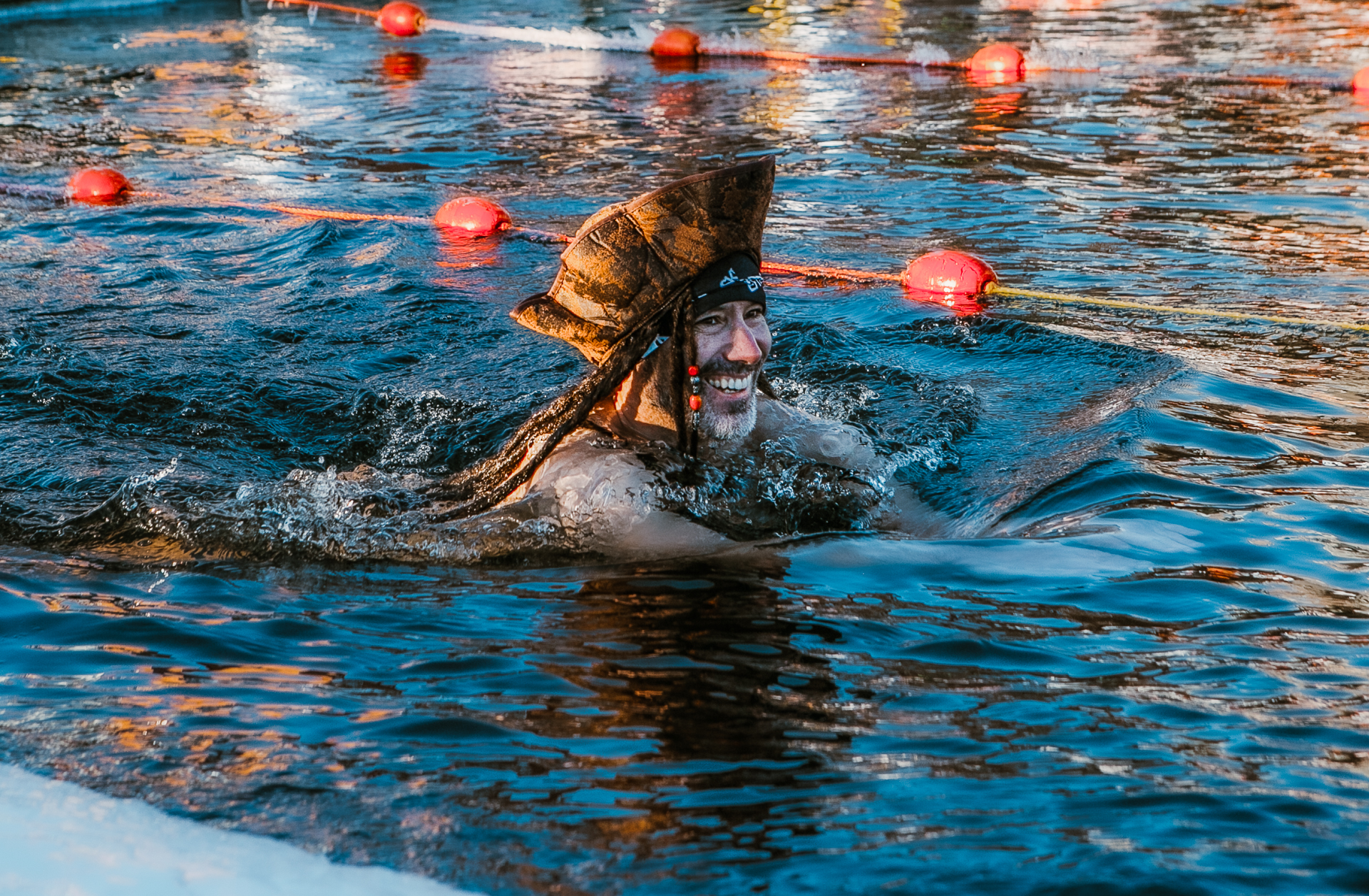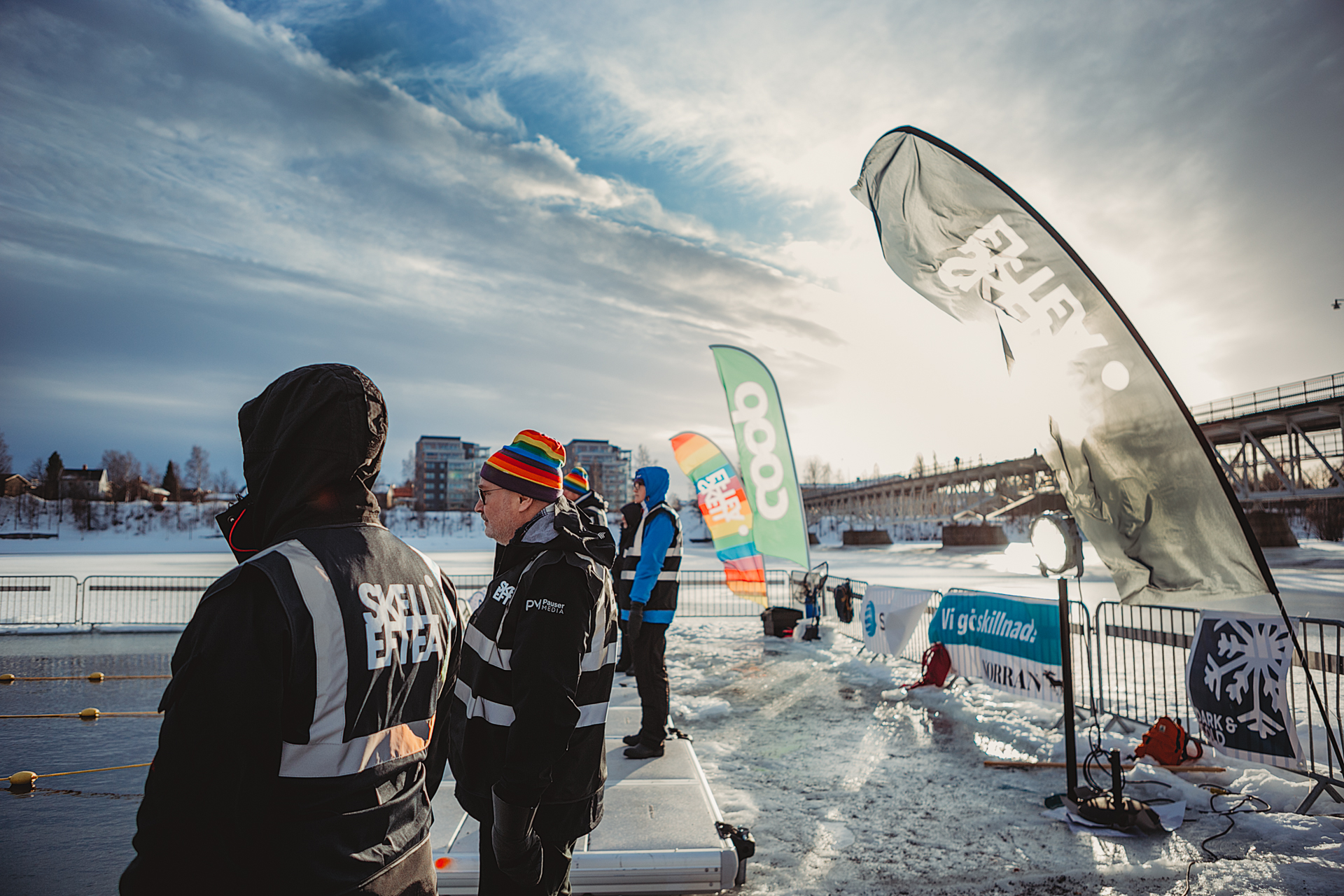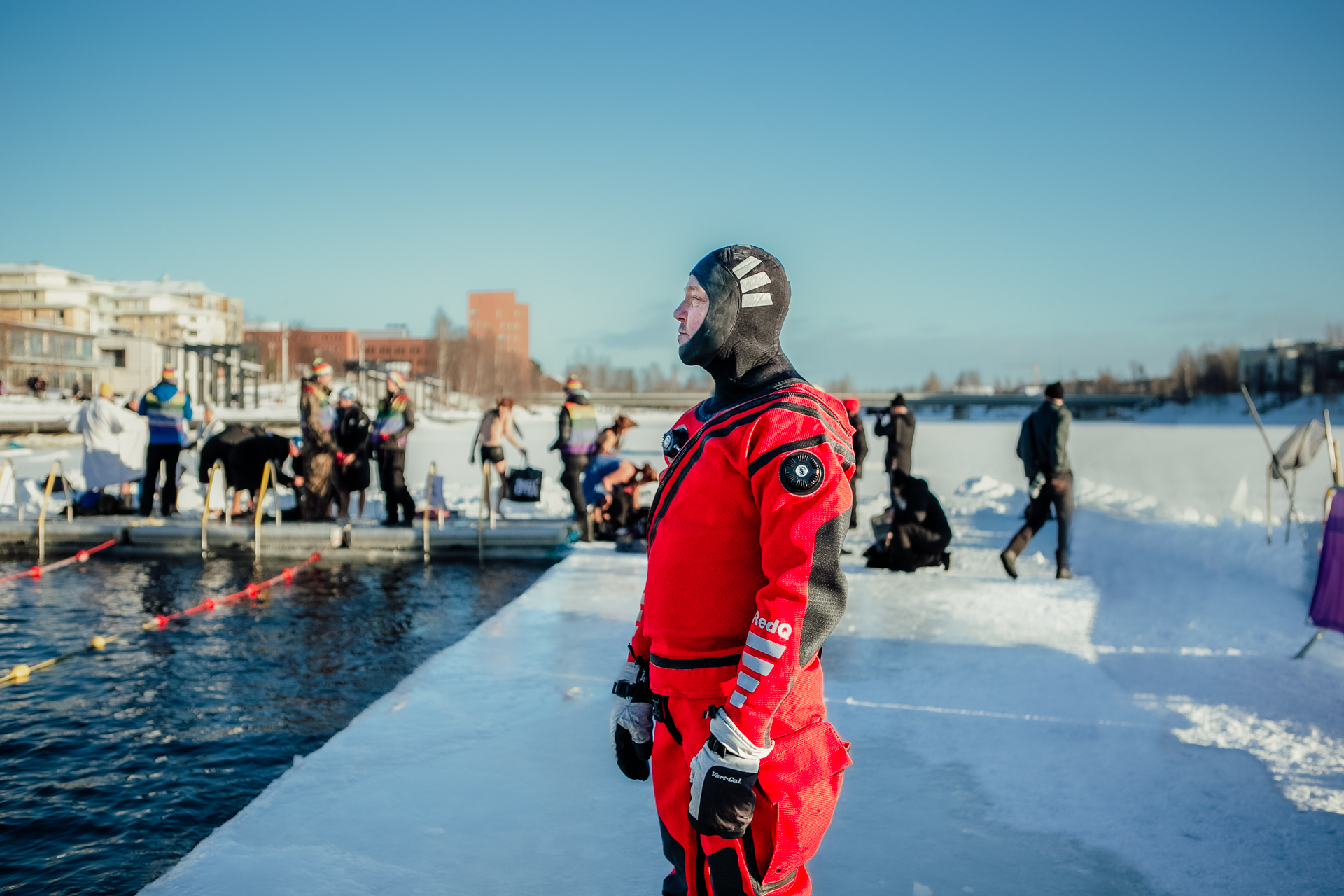On the 10th and 11th of February, winter swimming is back! This year the competition will be at a new location: Kurjovikens Havsmarina in Skelleftehamn. After 12 years the Winter Swim is still one of the most important and popular events in Skellefteå where amateurs, professionals and thousands of curious people meet to enjoy this coolest of sports. Marina Georgescu dips her toe in. Photographs by Donna Richmond.
Icy cold water does not sound appealing for the majority of us. You might be thinking that there is no way you are stripping down in minus temperatures to get into the water.
However, one interesting fact is that the water temperature in the north of Sweden is normally warmer than the external temperature, so it might actually feel better. Not only that, it seems that there are some benefits for those who practice winter swimming.
Shortness of breath is the first symptom – you feel like you are going to die. It is known as the “gasp reflex” and it’s the body’s natural response to the cold water punching the air out of your lungs. You resist and focus on your breathing, while repeating to yourself “I will survive, I will survive”, and just like that your breathing starts to regulate and you have become a winter swimming addict. The rush, the feeling of aliveness, makes you feel like a superhero. It’s a natural high!
The first claims for the health benefits of cold water date back as far as 400 BCE, when according to Hippocrates, water therapy relieved fatigue. Another historic example is Thomas Jefferson who had a cold foot bath every morning for six decades to keep himself healthy. These health benefits are believed to be a result of the physiological and biochemical reactions caused by exposure to the cold water.
In fact, some studies reveal that winter swimming can help treat depression, since the cold water shock brings the body very close to the pain barrier and releases endorphins giving a sensation of joy. It also can improve the immune system by boosting the white blood cell count because the body is forced to react to changing conditions. It improves circulation and burns calories, since the heart has to pump blood faster and the body works harder to keep everything warm. Cold water swimmers become calmer and more relaxed so it helps reduce stress. And finally, it is a great way of socializing and making new friends because of the sense of community and camaraderie generated by facing a challenge and sharing the experience as a group.
Wow! Seems like a solution to everything. But how easy is it?
Winter swimming is like a journey – it can take time, and it should not be rushed. You have to go slowly and carefully, and if you want to try it and have any health reservations please consult your doctor before doing so. Normally, it is not recommended for people that have high blood pressure, heart disease, asthma or any condition that might prove risky, as well as children or elderly people (although in China the youngest swimmer is under 10 and the oldest is 80!).
Safety is of utmost importance and there are some things to consider.
Acclimatise: take your time, get used to the temperature. Swim around a bit. Some people claim that it takes six immersions to halve the severity of the cold water shock response. No diving or jumping in, unless you are used to the cold water. You can always train in the shower!
Never swim on your own.
Wear the right kit: in the beginning it might be good to wear a hat, neoprene gloves, booties, balaclava or a wetsuit. However, for competitions, only goggles, a latex cap, and standard swimwear are permitted.
Warm-up slowly: don’t have a hot shower straight after. Hot water can cool your core and it can be dangerous. Instead, remove all the wet clothes, dry yourself off (pat, don’t rub), and make sure you have plenty of warm clothes, wrap up well with lots of layers, have a hot drink and put yourself in a warm place.
Listen to your body. This is your own personal experiment and there is no universal answer to how long you can stay in for, it depends on your body. There is a myth that says that you can spend one minute per degree of water temperature in the water – however this is not recommended since everyone is different and reacts differently to cold water. There is no reliable answer and it can vary from day to day, depending on how you sleep, general health, stress, what you have eaten, and even the time of day.
An Olympic sport?
While many attend the large annual gatherings to swim as a tradition or simply for recreation, others consider the practice to be a legitimate sport and are lobbying the Olympic committee to have it included in the winter games. The two organizations pushing hardest for this are the International Winter Swimming Association (IWSA) and the International Ice Swimming Association (IISA). These two organizations were founded in 2006 and 2009 respectively and work to organize official competitions at various international sites that have a climate conducive for ice swimming in wintertime.
In Skellefteå the story is very interesting. It started around 15 years ago (2007-2008), with different people, on different projects, coming together under the umbrella of finding something fun to promote the benefits and wonders of living in a subarctic region. In their goal to promote the positives of darkness and cold, they set out on a quest to find the ultimate activity that would draw people to Skellefteå, and oh, how they achieved it!
What is normal for some can be a novelty for others. Jarkko Enqvist, originally from Finland, has participated in winter swimming his whole life and doesn’t consider it as especially fun. Lasse Westerlund, on the other hand, was fascinated by it.
How did you come up with the idea?
Jarkko: I was working on several international tourism projects selling Skellefteå. We noticed that most of the visitors that came to Skellefteå were only interested in visiting the industrial areas and we needed to reach more people. So, after some discussions we decided to contact Lasse Westerlund to join us in our quest to promote Skellefteå, since he had the experience from previous tourism projects working with the concept of winter and writing articles and so on.
Lasse: I wanted to know what the Finns do that is fun that we could also do in Skellefteå. So, I traveled for 2 weeks to find out what was the most fun thing to do. In Finland they were very good at winter swimming and they taught me how to do it, and I really enjoyed it, so I wrote an article about it. Then I asked Jarkko, why don’t we do this in Skellefteå? It’s so fun! However, Jarkko had done it all his life and for him there was no novelty, it was just a way of life. But not for northern Swedes, we don’t really know this culture. And then we started to talk about this and what to do and how we could do it.
From that moment on, it took Lasse and Jarkko a couple of years to realize their dream. They got some funds to go to Finland and learn how to organize an ice swimming competition properly, but when the decision to start the competition in 2011 was made there was no money to put it into practice. The hole in the Skellefteå river was the most difficult and costly thing that needed to be done, so they turned to the municipality:
– They said, no no no and no – and me and Lasse spent a whole day going around trying to find out who we should meet to get a ‘yes’, explains Jarkko.
They finally contacted Leif Gustavsson, the municipality’s director of recreation, with whom Lasse had previously worked.
– If we could get him to understand the project, we thought he’d say ‘yes’. So we prepared really well and he said ‘yes’!
We need competitors!
So now they had the ice hole, but what about the participants? The competition was two weeks away and they only had one swimmer, a Russian.
It looked like it was going to flop and they were considering canceling it, so they really needed to start marketing it. Luckily, the daily Swedish newspaper, Dagens Nyheter, wrote a six-page article about winter swimming. Then they got a phone call from a guy in Värmland who was interested.
– I hope I am not alone, said the guy in Värmland.
– No, you are not, said Lasse, totally truthfully. Now they had two swimmers.
Amazingly, in the end, 60 people signed up, from five different countries, and it was a success. On the day of the competition the temperature was -36c, so all other sporting activities in Sweden were called off, and the only sports event happening at the time was the winter swimming in Skellefteå. The coverage was international and it became a global story and the Skellefteå winter swim established itself on its first try!
Challenges, the best moment, and let’s dream big!
Every year they face new challenges, something that they did not know – it’s a learning in action process. The most difficult thing is to make the hole in the right place, and keep ice forming on top of it once it’s open (they use water pumps to keep the water flowing but ice can still form in a matter of hours!). Then the logistics during the day. Without the municipality’s support (facilities and finance), volunteers and members of the association it would not be possible:
– The municipality has seen how important this competition is for the soul of Skellefteå; it is world-renowned. Also, without the volunteers it would not be possible. First all the people from our organization that work during the whole year to make this possible, and then during the competition 100 volunteers participate! You don’t see them, but they are there. Because it’s outside they have to rotate. Being outside you get cold, you need to come in to get warm again and other people go outside, and so on, explains Jarkko.
For Lasse, the most special thing that has happened over all the winter swimming events, and that he will cherish all his life, was when a young lady from Gothenburg contacted them:
– She could not speak and could only talk with her eyes. She couldn’t move, she was in a wheelchair and to come and try winter swimming was her biggest dream! We invited her to hold a lecture on why she wanted to do this. She could write with her eyes. It was so moving that we asked her to give the same speech at the inauguration.
He recalls how she had experienced different things like skydiving and been up Kebnekaise (highest mountain in Sweden), and she wanted to try winter swimming (or dipping for her) to see if she might get in contact with her nerves. Finally when she tried it, for her it was her most valued experience ever!
Both, Jarkko and Lasse, agree on how many interesting people have come to the competition year after year. People from all over the world connect like a family: you come as a guest, you leave as a friend, they say.
Finally, the most impressive feat was in 2013, when they set up a winter swimming competition in Uganda with 50 tons of ice in a swimming pool! A great success but a hard job, where they managed to get the water down to 5 degrees. Some locals there thought the water temperature was horrible!
– We are good at making heat, they are good at making coolness – they can’t survive without it. It was a mind blowing experience that there was ice everywhere. Here it would not be possible to get that much ice – even during summer for example, said Jarkko.
Incredibly, 56 people participated in this African competition, and the winner was a 17-year-old, John Lule. He won, and his prize was to come to Skellefteå and participate in the winter swimming. Lule eventually came to Skellefteå and participated in all sorts of activities, even in Skellefteå AIK training, and also competed in the winter swimming winning a silver medal in his category. Very athletic!
The ultimate goal of this yearly event is not just the competition, as both Lasse and Jarkko point out. The goal is to sell darkness and cold in this part of the world, to make it more attractive to live up here. How the melancholy of those winter months can boost creativity, and the fact that it is a “privilege to have the possibility to live up here in this subarctic region – so close to nature and still meeting all the 4 seasons and challenges”.
The built from that modest first competition. In 2018, they had 26 countries and one Indian nation (from the United States) and around 400 competitors. Then of course Covid came and they had to work around it. However, It’s still one of biggest events in Skellefteå. They even close the current of the river down for a few hours to be able to do it (it would be dangerous to swim in a full current).
Still focused on the cultural aspect they envisioned from the beginning, the founders have incorporated more cultural events – such as poetry and music competitions. For them, the swimming competition is not the be-all and end-all.
– We want more cultural events during the days. We have talked to the local theater, for example, to see if it is possible to have some improvisation on ice, or even to have some ballet on ice, says Jarkko.
This year they will have different activities organized around the competition. For more information go to vintersim.se.
This year’s program at Kurjovikens Havsmarina in Skelleftehamn.
Adress: Brädgårdsvägen 2, 93233 Skelleftehamn
Friday 9th February
18.00-19.00 Opening ceremony. Poetry on the ice, music on the ice, torch dance with Skellefteå Dance & Ballet Association.
Saturday 10th and Sunday 11th February
11:00-16.00. Distance competitions. 25m, 50m, 100m, 200m, and 25mx4 (relay).
Food and Drink
Kurjovikens Sjökrog is open all weekend and serves food and drinks.
Kurjovikens Bränneri & Gästkök sells hamburgers.
Live Music
Saturday: Blackbird & Pearl, teaser | Per Strömbro & Friends Kajsa, P-A, and Johan | Mandolinkillen Original.
Sunday: Skellefteå Saxophone Quartet.
Transport
There are plenty of parking spaces if you’re driving.
By bus – Take line 2 with Skelleftebuss, which will have reinforced routes.
Activities at the location
There will also be a market, ice carousel, Mimmi’s Dance Studio, movies for children, machinery showroom, food over an open fire, and you can also try a winter bath if you’re feeling brave.
Every Sunday at Café Kajutan in Stackgrönnan you can try out winter swimming – check the FB group: “Vinterbad i Skellefteå”.
Other useful pages: darkandcold.com and visitskelleftea.se
Good luck and don’t freeze!
